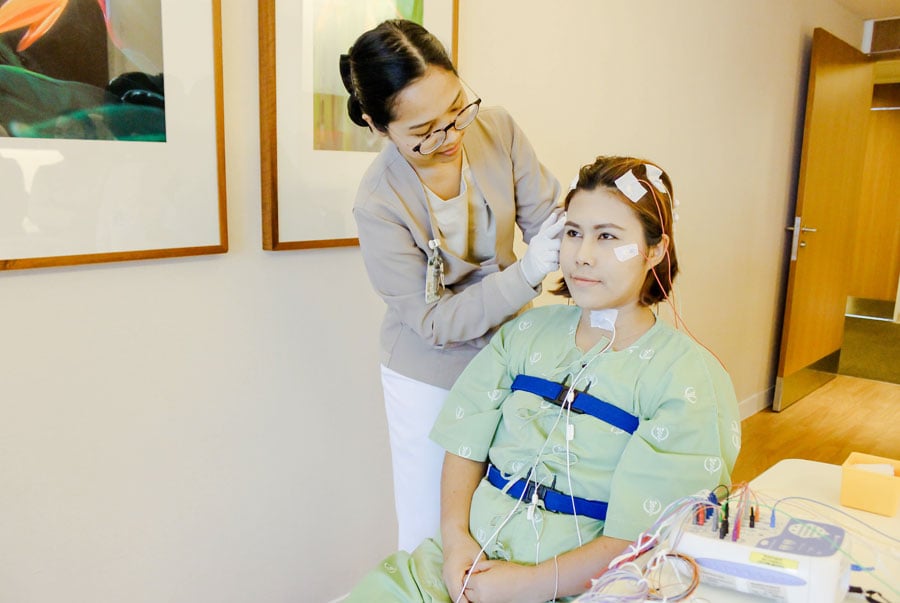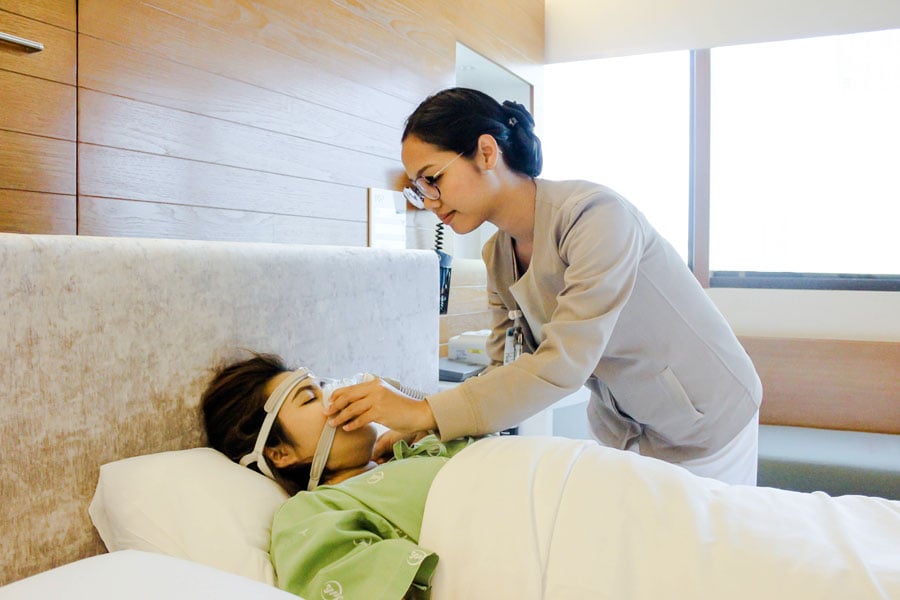
The sleep study will be monitored continuously by a medical professional throughout the night (Comprehensive technician-attended polysomnography). This examination consists of:
- Electroencephalography (EEG) for recording brain activity and determining sleep stages
- Electrocardiogram under the chin and legs to monitor heart rhythm
- Measurement of oxygen in the blood by using pulse oximetry
- Monitoring the patient’s breathing
- Recording the sound levels of the patient’s snores
- Monitoring abnormal eye movement or teeth grinding
The sleep study will start in the early evening (at approximately 21.00 hrs., dependent on the individual’s needs). Before beginning the sleep study, the medical staff will gather information from the patient regarding their sleeping habits. This information can be gathered by either asking the patient a set of questions or having the patient fill out a questionnaire. The patient will also have to fill out a consent form. Once this is complete, the hospital staff will explain how the devices work and what will take place during the study. This includes:
The patient will usually wear a CPAP mask in cases where there is severe obstructive sleep apnea, as the hospital staff will use this to treat the patient during the second half of the night.
Once the patient is ready to go to sleep after showering, the hospital staff will begin attaching the measurement devices for brainwaves, eye movement, muscles under the chin and legs, as well as attach an electrocardiogram.
The patient will also have all the various devices and cords attached to their head, face, chin, chest, stomach, and both legs, as well as a pulse oximeter on their finger to measure the oxygen in their blood. A microphone is also attached to the patient’s neck to measure the volume of the patient’s snores. In addition, CCTV recordings will be made as necessary, and these will be monitored by hospital staff from the control room outside the sleep lab so that they are able look after the patient during the study.
